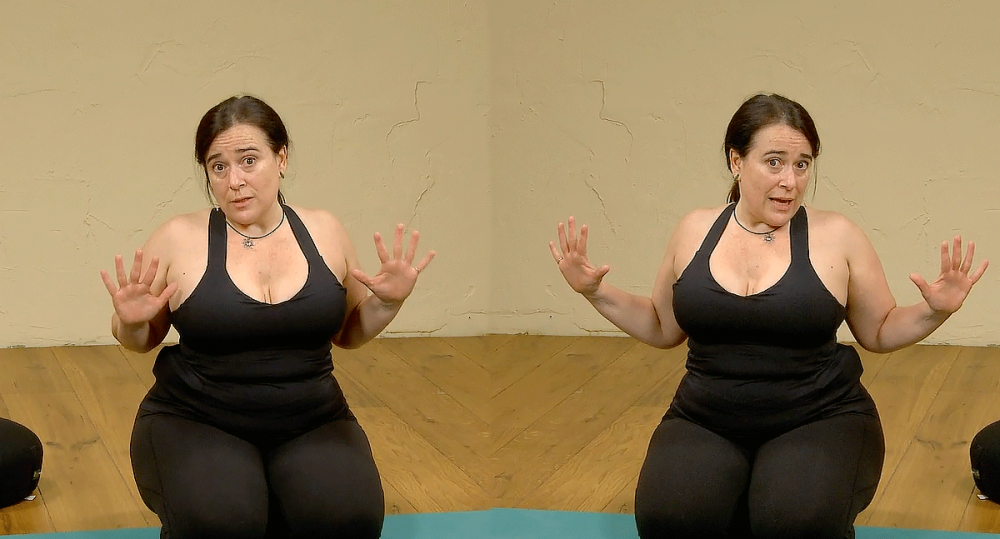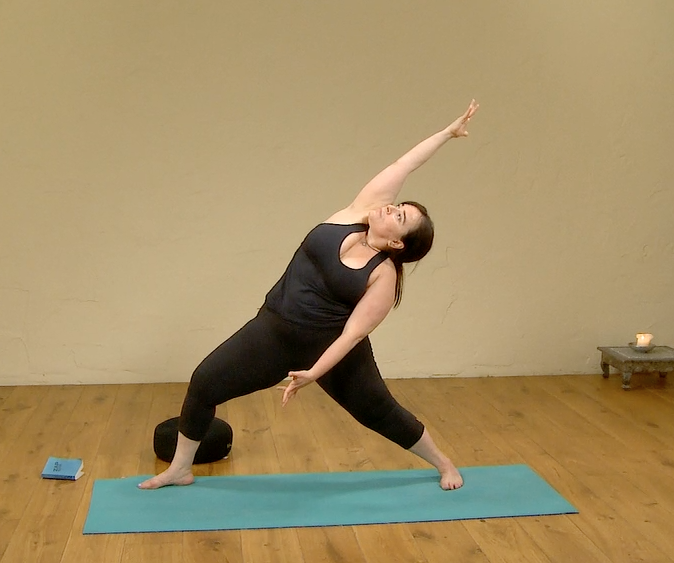Anat has a lovely way of working on strength that’s beautifully highlighted in her class: Inner and outer strength.
Anat talks about the yang and yin aspects of strength: muscular strength and strength of determination & vulnerability. She also makes a great point about shoulder alignment in Chaturanga that I think everyone should consider.
So what is the Yin and Yang of strength?
Anat explains that like everything in life strength also has Yin and Yang aspects
The yang part of strength is seated in our lower belly, back, sacrum and legs. In Warrior for example, you can stay in this pose for longer when you have strong legs.. This is our outward strength.
The yin part of strength is seated in our chest, and is the area for our compassion, our softness and sweetness. Without out this aspect, strength would be aggression.
Tempered with our vulnerable softness we find the balance of true strength – Inner and outer.
When we work on strength it’s inevitable that we encounter weakness, so it takes extra strength not to be overwhelmend by what we see – Anat Geiger
Strength for Anat is the balance between our powerful self and our compassionate and soft self. She sees compassion and vulnerability as the yin aspect of strength.
So if you are working on strength this month, either having it as a focus in your own practice or joining us with our Strong Body Program, don’t forget to welcome your strength and embrace your compassion.
Inner and Outer Strength – a walkthrough
Class: Inner and Outer Strength
Teacher: Anat Geiger
Style: Vinyasa Flow
Level: 2
Length: 60 mins
Props: Block
When we practice strengthening exercises we encounter our weaknesses; this sequence with Anat is meant to train our muscles and our minds to stay calm and strong in the face of challenges, and to develop kindness to prevent our strength from becoming aggression.
Anat starts this class with Kapalbhati (shiny skull) pranayama. This pranayama is a cleansing practice, clearing your sinuses and clearing your mind.
Carrying the internal awareness cultivated by Kapalbhati, progress into a more dynamic practice working on your core and shoulders including plank and crow pose.
As you begin to work with your body, invite strength in. Sit with the tension created by challenging your body and welcome the feeling. Welcome the challenge and discover your inner strength.
“Strength is giving your best and also being able to unwind immediately letting go”
As the class gets stronger make sure you use your sense of determination and humour 🙂
A few words from Anat on shoulder alignment in Chaturanga….
“In this class I give a quick explanation on shoulder alignment in poses like Chaturanga and I wanted to elaborate on it a little more.
Incorrect shoulder alignment is one of the most common causes for shoulder injuries in yoga.
People have the tendency to allow the shoulders to come forward, in an internal rotation. We don’t have a lot of supportive muscles in the front of the shoulder joint so it is much more interesting to use the muscles in the back to bring your shoulders in the correct alignment.
A common alignment tip for poses like Chaturanga is to have your hands under your shoulders. This is essentially correct however for some people it does not work. It’s important to have some external rotation in your shoulders and depending on your bone structure this could mean that you will have to bring your hands out a little more.

Our bones grow in spirals and they vary immensely from person to person. So depending on whether you have a long spiral or little one in your humerus, your shoulder alignment will be different.
Test your alignment
You can test it by looking at how your arms and hands fall when you are standing. The most natural and common pattern is that your palms of your hands are facing in. This alignment will mean that ‘shoulders under your hands’ is quite correct. However if your hands face more forward it could mean that your alignment is different.
Bring your hands up in line with your shoulders in front of a mirror and engage your back muscles, drawing your shoulder blades back in down. Are your shoulders internally rotated? If they are try moving your hands outwards slightly. It should improve the rotation.”

